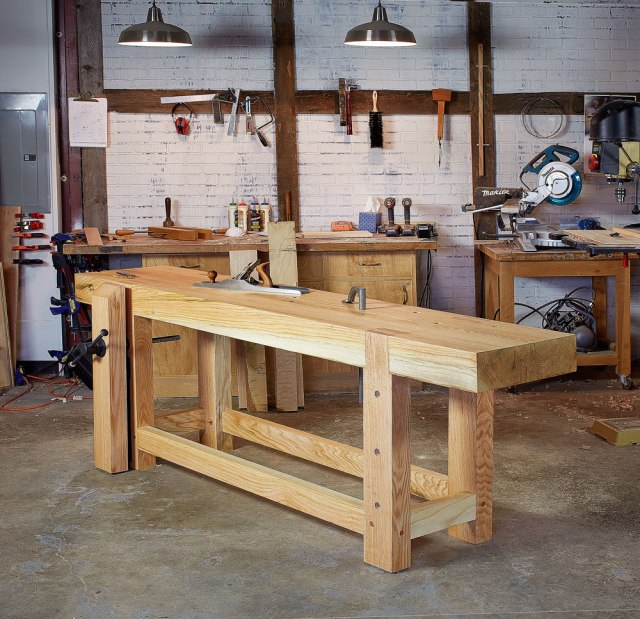
After reading hundreds (thousands?) of historical woodworking texts I have noticed a mantra for making furniture: Use wood that is well-seasoned.
It’s fantastic advice. Perhaps it’s even the starting point for all fine furniture making. But does it apply to building your workbench? If we follow the historical texts, then yes. I have yet to find any old book that says: The stock for your bench can be a little (or a lot) wet.
And yet, here’s the problem that I have discovered after years of building benches. Thick stock (6”, for example) can take way more than a decade to dry. I’ve cut into 6”-thick slabs that had been air-dried for 13 years that were more than 60 percent moisture content (MC). That’s way above the 6 percent recommended by many books.
Should one wait 50 more years with these slabs? Use MDF instead?
After working with massive wet slabs for the last seven years or so, I offer this recommendation based on personal experience – not on historical research or anything I’ve gleaned from my library:
Use wet wood for your benchtop. Even if it has been seasoned less than a year, you’ll be OK. Just be prepared to flatten the thing. And don’t be an idiot about your undercarriage (that sounds like advice to my teenage self).
Here’s my strategy with wet slabs: Use a species for the benchtop that dries readily, such as red oak. For the undercarriage, use wood that is at equilibrium moisture content. Because these components are rarely more than 3” thick they can be kiln-dried.
This combination works well in my experience. The undercarriage is dry. It won’t shrink. But it acts like a frame for drying the top, which shrinks around the joints on the tops of the legs.
Yes, the top will distort a bit as it dries. But you’re a woodworker – flatten the sucker.
But when the benchtop finishes drying after a few years, you will find it to be glorious. Slab tops don’t move much (if at all) after a few years in the shop. They just sit there like a machinist’s reference surface.
I think it’s worth the effort to find a slab. And I think it’s worth the effort to work with a wet one.
The last few wet slabs I’ve worked with came from North Carolina sawyer Lesley Caudle. He sells kits for workbenches that are inexpensive and ready to go – you just have to pick them up or work with Lesley to get them trucked to you. (You can email Lesley at lesley27011@yahoo.com.) Don’t be alarmed if the benchtop was cut less than 12 months ago. Embrace it.
— Christopher Schwarz